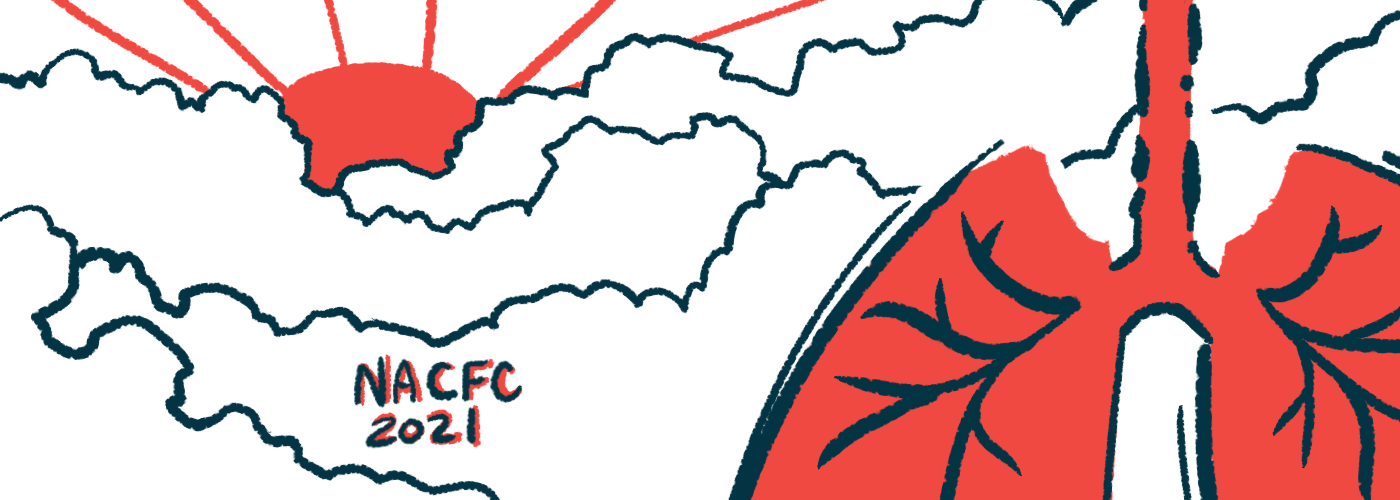#NACFC2021 – Trikafta Found to Quickly Ease Sinus Symptoms in CF

Treatment with Trikafta rapidly eases symptoms of chronic nose and sinus inflammation in people with cystic fibrosis (CF), according to a new study — in which researchers noted that 30-60% of CF patients report symptoms of sinus disease.
Trikafta “improves symptoms of sinonasal disease within seven days of therapy, and the improvement persists up to at least six months,” Anna Zemke, MD, PhD, a professor at the University of Pittsburgh, said in discussing the study at the 2021 North American Cystic Fibrosis Conference (NACFC), held online Nov. 2–5.
Her talk was titled “Elexacaftor-tezacaftor-ivacaftor improves chronic rhinosinusitis in cystic fibrosis.”
Many people with CF experience severe chronic rhinosinusitis, or inflammation of the sinus and nasal cavities. This condition causes symptoms such as congestion and a runny nose, and it may set the stage for lung infections.
Chronic rhinosinusoitis “has multiple impacts for the health and wellbeing of individuals with CF,” Zemke said. She noted that patients may be burdened by symptoms of the condition itself, as well as the need for treatments.
Trikafta is an approved triple combination therapy for CF, marketed by Vertex Pharmaceuticals. Clinical trials and real-world data have illustrated that the medication can improve lung function in eligible patients.
CF is caused by mutations that lead to defects in the CFTR protein. With its combination of three CFTR modulators — medicines that work to improve this protein’s functionality in people with specific mutations — Trikafta appears to be a potential therapy for also treating related sinus disease symptoms.
The study question, according to Zemke, was “how does [Trikafta] affect the clinical manifestations of CF sinus disease?”
In her presentation, she shared data for 34 CF patients who started on Trikafta at the University of Pittsburgh, in Pennsylvania, or the University of North Carolina, at Chapel Hill.
Among these patients, 62% were male, and the median age was 27.5 — though Zemke noted that “a full third” of the group were teenagers. About two-thirds of the patients had both CFTR gene copies with the F508del mutation, the most common CF-causing mutation, and just more than half had previously been on other CFTR modulator therapies before Trikafta.
Prior to starting on Trikafta, and after about nine months on the medication, the patients underwent comprehensive assessments of sinus health. They also regularly completed a questionnaire, called SNOT-22 (sinonasal outcome test-22), measuring chronic rhinosinusitis symptoms. Higher scores on this test indicate more severe symptoms; of note, a change in score of 8.9 points or more is considered clinically significant.
SNOT-22 “has been widely used in cystic fibrosis, as well as other causes of CRS [chronic rhinosinusitis] … and it has subscales covering various sinonasal symptoms — for example, plugged nose, nasal drainage, facial pain — as well as subscales regarding sleep and productivity, and mood,” Zemke said.
Prior to starting treatment, the mean SNOT-22 score was nearly 25 points. The scores rapidly decreased after patients started on Trikafta.
In fact, by one month after treatment, mean scores were less than 15 points, well below the minimum change needed to indicate a clinically significant improvement.
SNOT-22 scores remained low out to six months, Zemke noted, pointing to charts showing the therapy’s sustained effects.
“We saw a really dramatic improvement in sinonasal symptom burden within a week of starting treatment” with Trikafta, Zemke said.
She added that improvements were seen across all subscales of the SNOT-22 assessment.
Statistical analyses showed that people with more sinus and nasal inflammation prior to treatment — as measured with CT scans — were significantly more likely to have a reduction in chronic rhinosinusitis symptoms.
Other assessed variables, including age and sweat chloride levels, were not significantly predictive of improvement on SNOT-22. However, Zemke noted that this study may be too small to detect statistically meaningful associations.
Imaging of the patients’ sinuses via CT scans suggested that treatment with Trikafta reduced mucus levels and mucosal thickening, which likely were key to the overall improvements seen in the study.
Assessments of patients’ nasal tissue, done via endoscopy, suggested that treatment with Trikafta decreased abnormalities such as polyps and crusting, with crusting “entirely resolved” with Trikafta treatment. Zemke called these results “pretty dramatic.”
Statistical analyses suggested that, like SNOT-22 scores, endoscopy improvements were more common in people with more sinus and nasal inflammation before starting Trikafta.
Treatment with Trikafta did not improve patients’ ability to smell, called olfaction, other analyses found.
Zemke and her colleagues are now conducting ongoing analyses to assess how treatment affected the types of bacteria living in participants’ noses and sinuses. She noted that the finding will be important across a range of CF patients, as “sinus disease persists after lung transplant.”
This study was funded primarily by the CF Foundation.
Editor’s note: The Cystic Fibrosis News Today team is providing coverage of the virtual 2021 North American Cystic Fibrosis Conference (NACFC) Nov. 2–5. Go here to see the latest stories from the conference.









